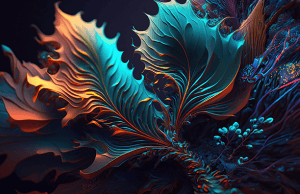
The evolution of AI has significantly improved photo editing and image enhancement, offering capabilities that were once only possible with professional software and manual adjustments. Today, AI-powered tools like Adobe Sensei (Photoshop AI), Luminar AI, and Topaz Labs allow designers and photographers to manipulate images with unprecedented speed and precision.
One of the most revolutionary features of AI-assisted photo editing is automatic object removal. In traditional editing, removing an unwanted element—such as a passerby in the background of a professional photo—required hours of manual cloning, blending, and color correction. AI can now perform this task instantly and seamlessly, predicting the missing background and filling in the gap with realistic details.
Another game-changing AI capability is smart upscaling, which enhances low-resolution images by adding realistic details that weren’t originally present. AI-powered upscaling tools can reconstruct textures, sharpen blurry images, and even restore old or damaged photographs. This technology is particularly useful for archival restoration, digital marketing, and e-commerce, where high-quality visuals are essential.
AI also plays a crucial role in lighting and color correction. It can analyze an image’s existing color balance and automatically suggest or apply adjustments that enhance mood, clarity, and vibrance. For instance, AI can transform a dull, cloudy landscape photo into a bright, golden-hour masterpiece by adjusting contrast, saturation, and exposure intelligently.
Despite its advantages, AI-assisted photo editing raises questions about authenticity and artistic integrity. With deep learning algorithms capable of completely altering an image, the line between reality and digital manipulation becomes increasingly blurred. This is especially concerning in journalism, social media, and advertising, where highly edited or AI-generated visuals may mislead audiences.
Nevertheless, AI-driven editing tools empower designers, photographers, and content creators, providing them with more efficient workflows, higher-quality results, and creative possibilities that were previously unimaginable. Whether for professional photography, social media content, or digital art, AI-enhanced photo editing is becoming an indispensable part of modern visual arts.